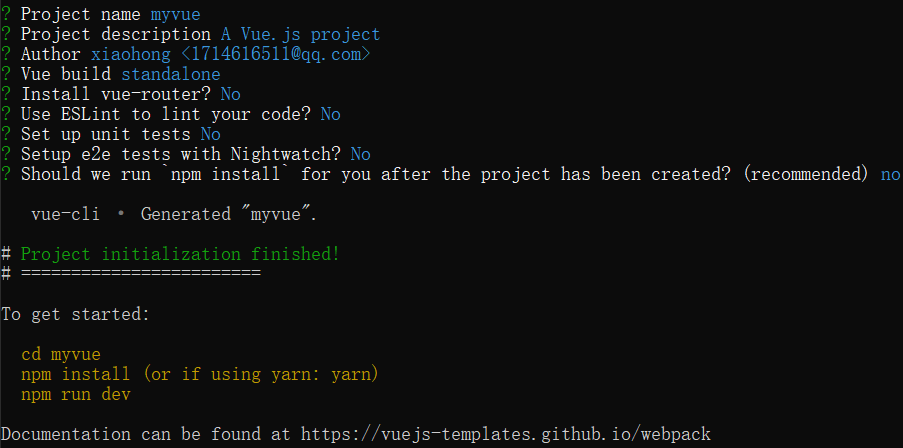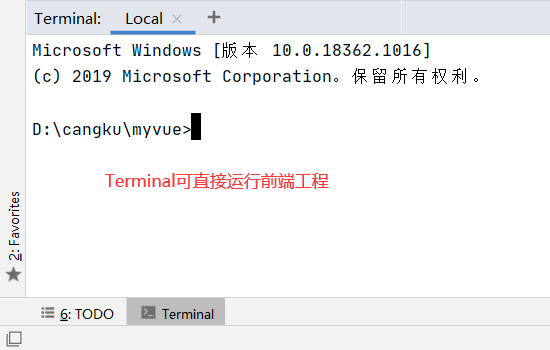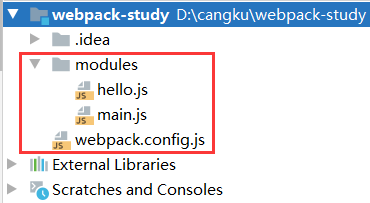关于Vue
https://cn.vuejs.org/ Idea的JavaScript版本设置在ECMAScript6以上 尤雨溪开发 一套用于构建用户界面的渐进式框架 核心库只关心视图层 Soc关注点分离原则
便于整合第三方库
网络通信:axios(前端通信框架ajax) 页面跳转:vue-router 状态管理:vuex vue-UI:ICE,ElementUI……
特点
vm:数据双向绑定(相当于后端的controller) 虚拟dom:利用内存 计算属性:vue特色 综合了:mvvm(angular)+dom(react)
数据驱动,组件化
dom监听,数据绑定
第一个Vue程序
Idea安装vue插件
https://www.cnblogs.com/rain2020/p/12709370.html
vue-first
https://github.com/ChenCurry/vue-first.git
(判断,循环,事件,双向绑定,组件,Axios通信,计算属性,插槽slot,自定义事件内容分发)
常用属性
v-on绑定事件,简写 @ v-model数据双向绑定 v-bind给组件绑定参数,简写 :
组件内部绑定事件
this.$emit("事件名",参数);
第一个Vue-cli程序
安装nodejs
http://nodejs.cn/download/
(vue是基于nodejs) node -v npm -v
安装npm淘宝镜像加速器
npm install cnpm -g
该目录下会多出一些文件
C:UsersasusAppDataRoaming pm ode_modules
安装vue-cli
cnpm install vue-cli -g vue list
创建vue程序
cd D:cangku vue init webpack myvue
# 后话:在idea中新建module-->js-->vue


安装依赖环境
cd myvue npm install
npm audit fix

启动项目
npm run dev

访问
http://localhost:8080/
用Idea打开myvue

开启管理员权限

(后话:这样修改了不能破解了,完了该课学习换回去)
Webpack
Webpack是一个前端资源加载/打包工具。
安装(打包工具和客户端)
npm install webpack -g npm install webpack-cli -g
测试安装成功
webpack -v webpack-cli -v
新建文件夹webpack-study并用Idea打开

hello.js
//暴露一个方法 exports.sayHi = function () { document.write("<h1>测试webpack</h1>") }; exports.sayHi2 = function () { document.write("<h1>测试webpack</h1>") }; exports.sayHi3 = function () { document.write("<h1>测试webpack</h1>") };
main.js
var hello = require("./hello"); hello.sayHi();
webpack.config.js
module.exports = { entry: './modules/main.js', output: { filename: "./js/bundle.js" } };
打包

index.html测试
<!DOCTYPE html> <html lang="en"> <head> <meta charset="UTF-8"> <title>Title</title> </head> <body> <script src="dist/js/bundle.js"></script> </body> </html>
Vue Router
(myvue工程中)
为当前项目安装
npm install vue-router --save-dev npm audit fix
便可在main.js中导入并显示声明使用
import Vue from 'vue' import App from './App' import VueRouter from 'vue-router' import router from './router'//自动扫描路由配置 Vue.config.productionTip = false //显示声明使用vuerouter Vue.use(VueRouter); new Vue({ el: '#app', //配置路由 router, components: { App }, template: '<App/>' })
使用路由(相当于路由的配置文件)
import Vue from 'vue'; import VueRouter from "vue-router"; import Content from "../components/Content"; import Main from "../components/Main"; //安装路由 Vue.use(VueRouter); //配置导出路由 export default new VueRouter({ routes: [ { //路由路径 path: '/content', name: 'content', //跳转的组件 component: Content }, { //路由路径 path: '/main', name: 'main', //跳转的组件 component: Main } ] })
App.vue
<template> <div id="app"> <h1>xio xi</h1> <router-link to="/main">首页</router-link> <router-link to="/content">内容页</router-link> <router-view></router-view> </div> </template> <script> export default { name: 'App', } </script> <style> #app { font-family: 'Avenir', Helvetica, Arial, sans-serif; -webkit-font-smoothing: antialiased; -moz-osx-font-smoothing: grayscale; text-align: center; color: #2c3e50; margin-top: 60px; } </style>
部分代码略,见源码
https://github.com/ChenCurry/myvue.git
启动
npm run dev
Vue+ElementUI
创建项目hello-vue
命令提示符(管理员): cd D:cangku # 创建项目hello-vue vue init webpack hello-vue # 安装vue-router
cd hello-vue npm install vue-router --save-dev # 安装element-ui npm i element-ui -S # 安装依赖 npm install
npm audit fix # 安装SASS加速器 cnpm install sass-loader node-sass --save-dev # 启动测试 npm run dev
用Idea打开项目
assets:用于存放资源文件 components:用于存放 Vue 功能组件 views:用于存放 Vue 视图组件 router:用于存放 vue-router 配置
报错修改版本(先直接试试下面的步骤)
"sass-loader": "^10.0.1",改为"sass-loader": "^7.3.1",
重新安装/启动
cnpm install cnpm run dev
访问
http://localhost:8080/login
源码
https://github.com/ChenCurry/hello-vue.git
推荐
https://docsify.js.org/#/
嵌套路由
http://localhost:8080/main
组件+子路由+router-link+显示到router-view
404及路由钩子
https://github.com/ChenCurry/hello-vue.git
cnpm install axios -s